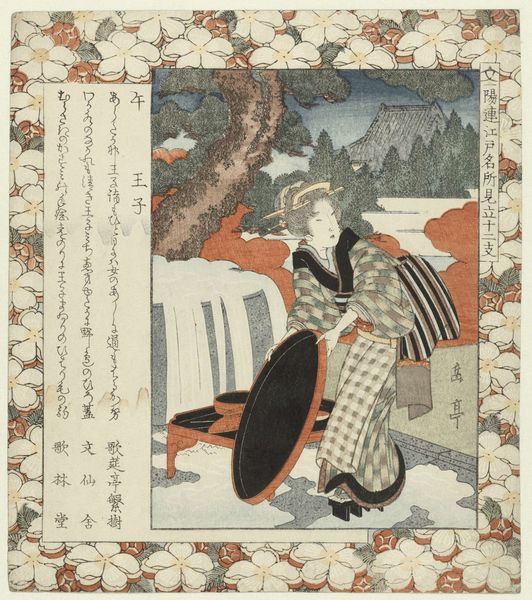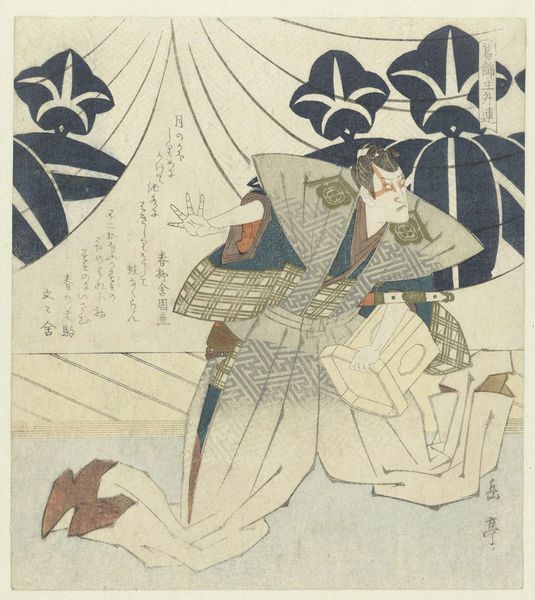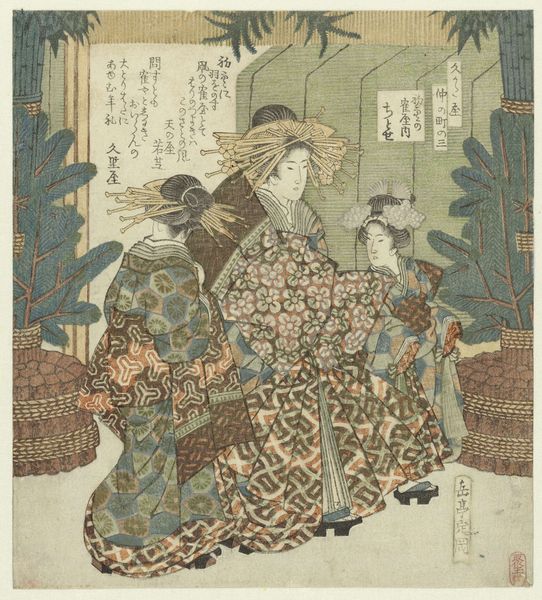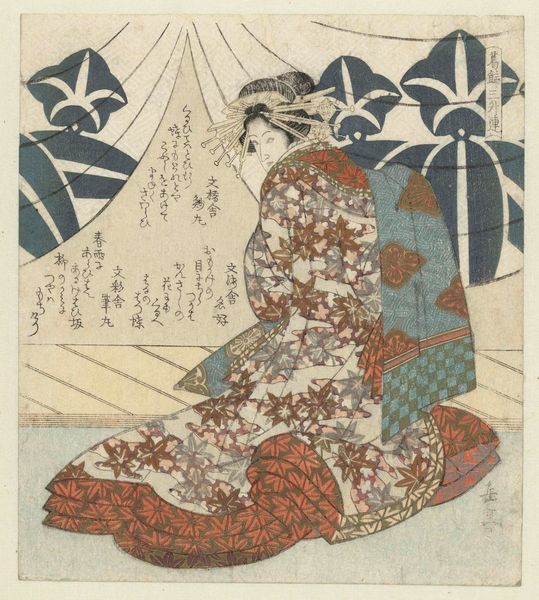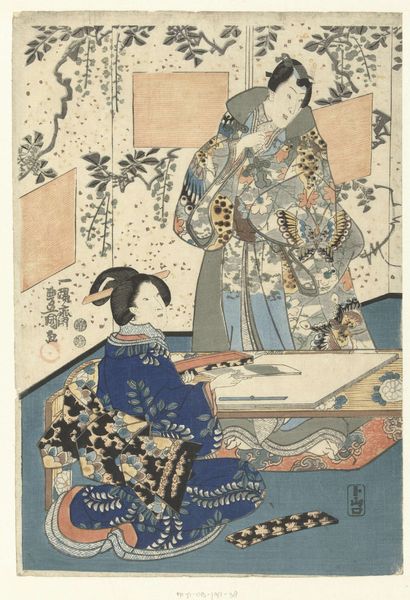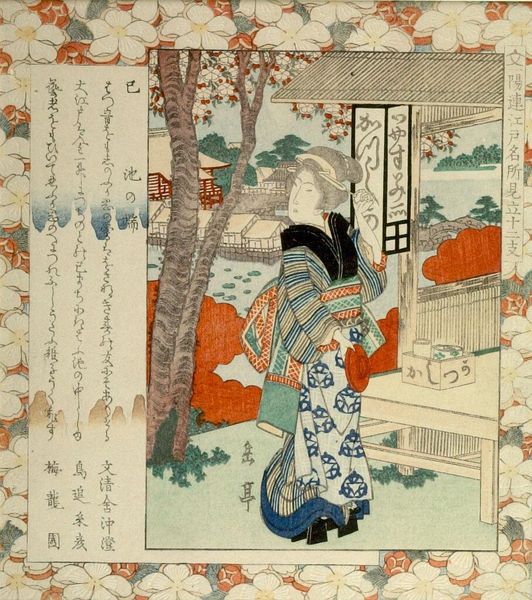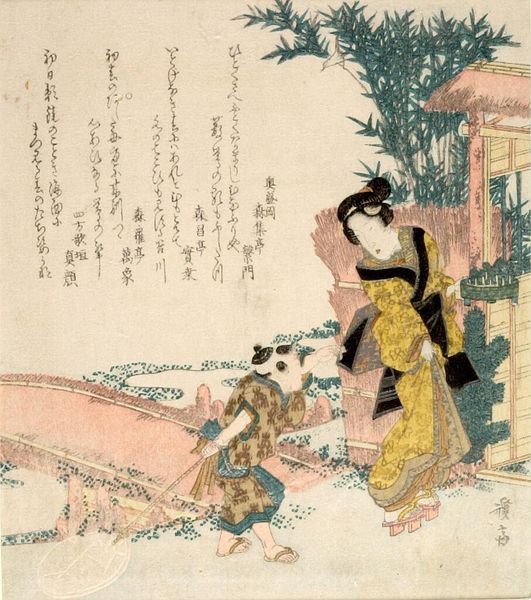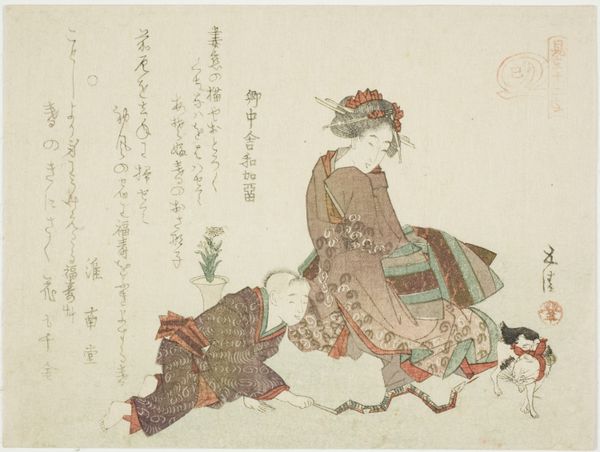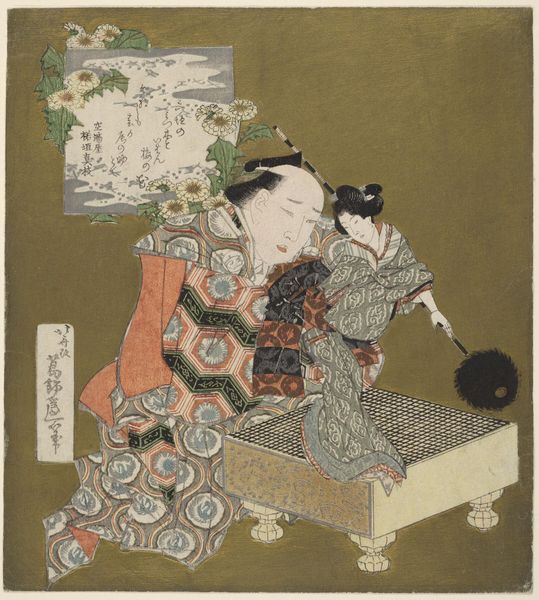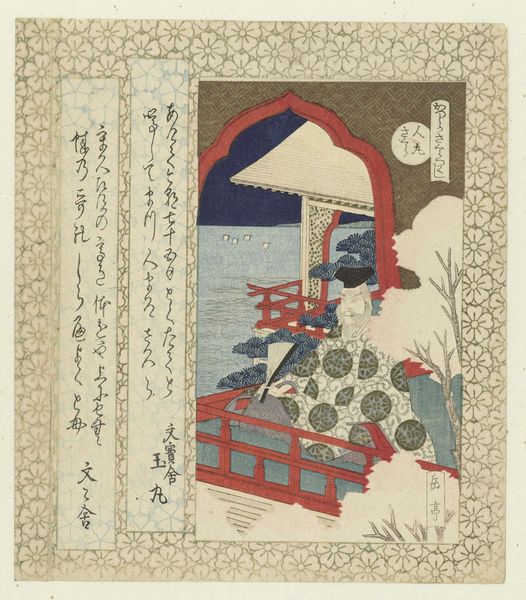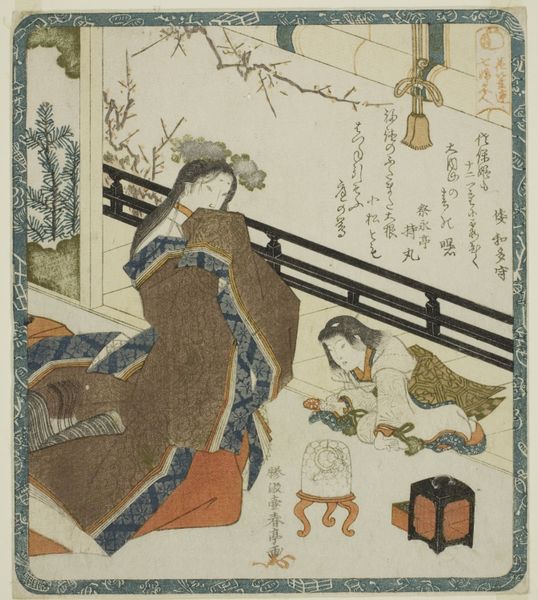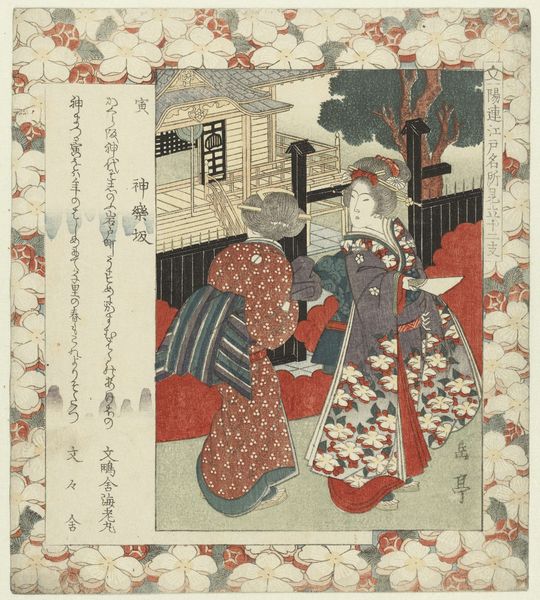
print, woodblock-print
#
water colours
# print
#
asian-art
#
landscape
#
ukiyo-e
#
figuration
#
woodblock-print
#
genre-painting
#
watercolor
Dimensions: height 211 mm, width 186 mm
Copyright: Rijks Museum: Open Domain
Editor: So, here we have Yashima Gakutei's "Haas: Kamejima," a woodblock print from around 1827. The delicate floral border really frames the central image, softening what could otherwise feel like a very stark scene. What are your initial thoughts on the structure and composition here? Curator: A curious visual construct, isn’t it? The initial observation leads me to the use of planes: the floral border acts as a sort of decorative proscenium arch, and this is clearly contrasted with the geometric structure of the bridge which bisects the figuration and the background. What purpose could be ascribed to this contrast in structure? Editor: Hmm, maybe it's highlighting a sense of transition? Like the figures are poised between different states or spaces? The rigid structure seems to confine them. Curator: Precisely. Let's focus on the treatment of line in Gakutei’s woodblock, particularly the manner by which the contours are defined. Notice the almost diagrammatic approach in rendering the architectural features, a marked contrast to the more fluid execution of the figures' robes. Consider how this interplay guides our gaze and potentially contributes to the overall dynamic. Editor: I see what you mean. The almost blocky lines in the houses and bridge compared to the flowing lines in the figures' clothing creates a definite contrast, almost highlighting the central figure as being organic versus the artifice of structure. Curator: Exactly. It is not about surface imitation of life, but to investigate visual vocabulary for cultural value and philosophy. Editor: That is fascinating. Thanks for the insight! Curator: Indeed, a beneficial exchange of perceptions. I am intrigued to think further on it.
Comments
No comments
Be the first to comment and join the conversation on the ultimate creative platform.
